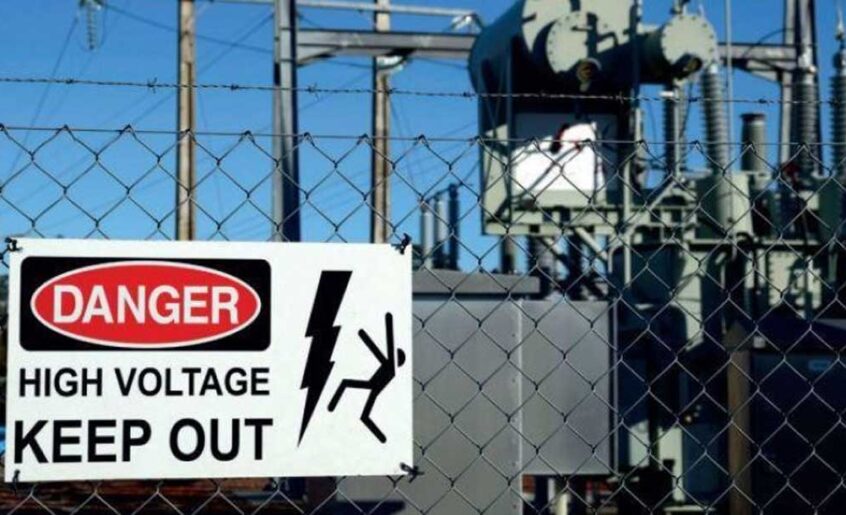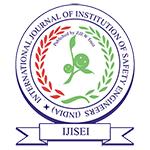A Study Of Risk Related To Electricity

Volume 6, Issue 1, January-March 2023
A Study Of Risk Related To Electricity
Tamanna Afroj
Director- Institution of Safety Engineers (India)
Email id: director@iseindia.in
Abstract
Electricity is a fundamental and essential form of energy in modern society. However, it poses significant risks to both human life and property. The study of risk control related to electricity aims to mitigate these risks by identifying and assessing. Effective risk control related to electricity requires a comprehensive understanding of electrical systems and the hazards associated with them. This understanding must be coupled with proper training and education for individuals who work with or are exposed to electrical systems. In addition, proper maintenance, inspection, and testing of electrical systems are essential to ensure their continued safe operation. Overall, the study of risk control related to electricity is essential for promoting safe and effective use of electrical energy in our society. Through the identification, assessment, and control of potential hazards, we can minimize the risks associated with electrical energy ensure the safety of individuals and property.
OBJECTIVE:
Objective to conduct study and publish this paper is know about risk related to electricity and how to mitigate them.
1. INTRODUCTION
Electricity is a fundamental source of energy that powers much of modern society. However, it also poses significant risks to human life and property. Accidents related to electrical energy can cause electrocution, electrical shock, and fires, which can have severe consequences. Therefore, the study of risk control related to electricity is essential to ensure the safe use and distribution of electrical energy.
The risk control process involves several steps, including: Hazard identification involves identifying potential sources of harm, such as electrical shock, electrocution, and fire caused by electrical malfunctions. Risk assessment involves evaluating the likelihood and severity of harm from identified hazards. Monitoring and review involve ongoing evaluation of the effectiveness of risk control measures and the identification of any new hazards.
The goal of risk control related to electricity is to identify, assess, and control potential hazards associated with the use of electrical energy. This process involves identifying potential sources of harm, evaluating the likelihood and severity of harm, and implementing measures to mitigate the identified hazards.
Effective risk control related to electricity requires a comprehensive understanding of electrical systems and their hazards. Individuals who work with or are exposed to electrical systems must receive proper training and education on electrical safety measures. Regular maintenance, inspection, and testing of electrical systems are also necessary to ensure their safe operation.
Overall, the study of risk control related to electricity is essential for promoting safe and effective use of electrical energy in our society. By identifying, assessing, and controlling potential hazards, we can minimize the risks associated with electrical energy and ensure the safety of individuals and property.
2. RISK RELATED TO ELECTRICTY
Electricity is very important in our daily life and it has negative impacts if not use safely. Risk of electricity may be Shock, Burn injury, person death, fire or other injury. The main hazards associated with electricity are:
- Contact with exposed live parts causing electric shock and burns (for example, exposed wiring or other electrical equipment coming into contact with metal surfaces such as metal floors or roofs)
- Defects or overload equipment or short circuit that could cause a fire
- Fire or explosion where electricity could be a source of ignition in a potentially flammable or explosive atmosphere (for example, in a paint spray booth).
- Person falling due to electric shock, etc.
3. HOW CAN WE CONTROL TO ELECTRICITY RELATED RISK?
Controlling electricity risk involves several measures that can be implemented to mitigate potential hazards associated with the use and distribution of electrical energy. These measures include:
- Engineering controls: These are measures that are built into electrical systems to control hazards. Examples include the installation of ground fault circuit interrupters (GFCIs), insulation, and shielding.
- Administrative controls: These are policies and procedures that are put in place to control hazards. Examples include establishing safety protocols for working with electrical systems, ensuring proper training and education for workers, and conducting regular safety audits.
- Personal protective equipment (PPE): These are items that workers can wear to protect themselves from electrical hazards. Examples include rubber gloves, safety glasses, and arc flash suits.
- Maintenance, inspection, and testing: Regular maintenance, inspection, and testing of electrical systems are essential to identify potential hazards and ensure the continued safe operation of these systems.
- Hazardous energy control (lockout/tagout): This is a procedure that prevents the accidental release of hazardous energy during maintenance, repair, or other servicing activities.
- Risk assessment: Conducting a risk assessment can help identify potential hazards associated with electrical systems and determine appropriate control measures to mitigate these hazards.
- Emergency response planning: Having an emergency response plan in place can help mitigate the consequences of electrical accidents by ensuring a timely and appropriate response to incidents.
In summary, controlling electricity risk requires maintenance, inspection, testing, risk assessment, and emergency response planning. Power routed through safety tripping devices, Training & close supervision to prevent unsafe practices help to control risk related to electricity. Implementing these measures can help ensure the safe use and distribution of electrical energy and minimize the risks associated with electrical hazards.
4. WHY ELECTRICAL SAFETY IS IMPORTANT?
Electrical safety is important because electricity is a powerful and potentially dangerous source of energy that is present in almost every aspect of modern life. Accidents related to electricity can cause serious injury, property damage, and even death. Therefore, it is essential to take precautions to ensure the safe use and distribution of electrical energy.
Here are some reasons why electrical safety is important:
- Human safety: Electricity can cause severe injuries such as electrocution, electrical shock, burns, and even death. By implementing appropriate safety measures, we can protect individuals from these hazards and ensure their safety.
- Property protection: Electrical malfunctions can cause fires, which can result in property damage and financial losses. Proper electrical safety measures can help prevent such incidents.
- Compliance: Compliancewith electrical safety regulations and standards is important for avoiding legal and financial penalties and maintaining a good reputation.
- Business continuity: Electrical accidents can disrupt operations and cause downtime, resulting in lost productivity and revenue. Proper electrical safety measures can help prevent such disruptions.
- Public safety: The safe distribution of electrical energy is essential for public safety.
Electrical accidents can cause widespread damage and endanger entire communities. Accident always effect to organization reputation and economy of country. So this is primary responsibility to prevent all accidents including accident that occurs from electrical hazard.
5. CONCLUSION
In conclusion, the study of risk control related to electricity is crucial for promoting safe and effective use of electrical energy in modern society. Electricity is a powerful and essential source of energy, but it can also pose significant risks to human life and property. Therefore, it is essential to identify, assess, and control potential hazards associated with the use and distribution of electrical energy. Effective risk control measures may include maintenance, inspection, testing, risk assessment, and emergency response planning. The hierarchy of controls is a framework for selecting the most effective control measures for protecting workers from hazards, starting with the most effective measure (elimination) and working down the list as needed.
By implementing appropriate risk control measures, individuals and organizations can ensure the safe use and distribution of electrical energy and minimize the risks associated with electrical hazards. Ultimately, the goal is to promote a safe and sustainable electrical energy infrastructure that supports the needs of society while protecting human life and property.
6. SUGGESTIONS
- The importance of electrical safety training for workers and employers
- Common electrical hazards and how to control them
- Electrical safety in the workplace: best practices and regulations
- Risk assessment and management in electrical systems
- Electrical maintenance and inspection best practices for preventing accidents
- Personal protective equipment for electrical workers
- Emergency response planning for electrical accidents
- The role of technology in improving electrical safety and risk control
- Electrical safety in the home: tips for homeowners and renters
- The impact of electrical accidents on society and the environment.
7. RECCONMENDATION
- Hazard identification and risk assessment techniques for electrical systems
- Control measures for electrical hazards in the workplace
- Electrical safety training and education for workers and employers
- Best practices for electrical maintenance, inspection, and testing
- The importance of regular safety audits for electrical systems
- The role of personal protective equipment in electrical safety
- Emergency response planning for electrical accidents
- Electrical safety regulations and standards
- The impact of new technologies on electrical safety and risk control
- Case studies of electrical accidents and their causes, consequences, and prevention measures.
- Identify to electricity related risk from effective manner and take adequate safety measure as per existing risk.
REFERENCES
- Occupational Safety and Health Administration (OSHA) Electrical Safety Standards: https://www.osha.gov/SLTC/electrical/
- National Fire Protection Association (NFPA) Electrical Safety Standards: https://www.nfpa.org/Codes-and-Standards/All-Codes-and-Standards/List-of-Codes-and-Standards/Detail?code=70E
- Institute of Electrical and Electronics Engineers (IEEE) Electrical Safety Standards: https://standards.ieee.org/standard/902-2020.html
- Centers for Disease Control and Prevention (CDC) Electrical Safety Guidelines: https://www.cdc.gov/niosh/topics/electrical/default.html
- Electrical Safety Foundation International (ESFI) Electrical Safety Resources: https://www.esfi.org/resources/
- American Society of Safety Professionals (ASSP) Electrical Safety Standards and Resources: https://www.assp.org/topics/electrical
- Electrical Contractors’ Association (ECA) Electrical Safety Guidance: https://www.eca.co.uk/business-industry-support/safety-and-technical/electrical-safety-guidance
- International Electrotechnical Commission (IEC) Electrical Safety Standards: https://www.iec.ch/safety/
- National Institute for Occupational Safety and Health (NIOSH) Electrical Safety Resources: https://www.cdc.gov/niosh/topics/electrical/safety.html
- Occupational Safety and Health Administration (OSHA) Electrical Safety eTool: https://www.osha.gov/SLTC/etools/electric_power/introduction.html
